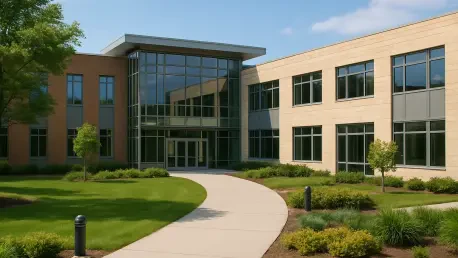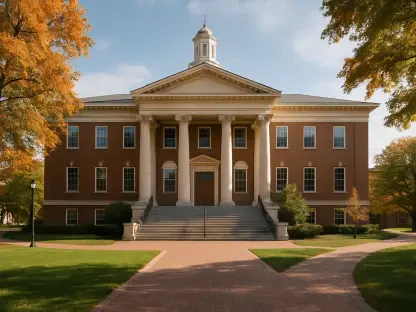In a bold stride toward redefining educational landscapes, the Washington-Saratoga-Warren-Hamilton-Essex (WSWHE) BOCES has initiated a groundbreaking project with its Vision 2027: Future-Focused Facilities plan in Wilton, New York. This transformative effort to create a centralized K–12 instructional campus on a sprawling 45.5-acre site at 230 Ballard Road is capturing attention across the region. With the promise of consolidating diverse programs into a unified, modern hub, this initiative is poised to address growing enrollment demands and facility limitations while enhancing hands-on learning experiences. The recent groundbreaking ceremony, attended by a wide array of stakeholders including school superintendents, regional legislators, and workforce partners, underscored a collective commitment to shaping a brighter future for students. As construction looms on the horizon, the project stands as a beacon of innovation, sparking curiosity about how it will reshape educational opportunities and prepare students for an evolving world.
Building a Visionary Educational Hub
Designing for Tomorrow’s Learners
The heart of the WSWHE BOCES initiative lies in crafting a state-of-the-art campus spanning 291,650 square feet, tailored to meet the dynamic needs of K–12 students across the region. This ambitious design will bring together the Career and Technical Education (CTE) and Exceptional Learners Division (ELD) programs, previously scattered across multiple locations, into a single cohesive site. Featuring three specialized instructional buildings for K-6 ELD, 7-12 ELD, and CTE programs, the campus will boast 44 CTE classrooms, shops, and labs alongside 53 ELD classrooms strategically placed near vital support services. Additional amenities like gymnasiums, therapeutic spaces, and playgrounds aim to create a holistic learning environment. With enhanced transportation access just a mile from I-87, Exit 16, the location promises ease for families and staff alike. This forward-thinking design prioritizes accessibility and innovation, ensuring that every element supports student growth and achievement in a rapidly changing educational landscape.
Collaboration as the Cornerstone
Beyond the physical infrastructure, the success of this project hinges on a robust collaborative framework that has guided its development from the outset. Stemming from the WSWHE BOCES 2023 Strategic Plan and an in-depth facilities study, the Vision 2027 initiative reflects input from a diverse group of stakeholders, including component school superintendents, educators, business officials, and community partners. This inclusive approach has ensured that the campus aligns with both educational priorities and regional workforce demands, creating a space that prepares students for real-world challenges. The approval from the New York State Education Department in August marked a pivotal step forward, validating the project’s direction. District Superintendent Dr. Turina Parker has emphasized that the campus will drive innovation in teaching methods and expand career pathways, fostering an environment where student success remains the central focus. Such collaboration underscores the project’s potential to serve as a model for educational planning across other regions.
Planning for a Sustainable Future
Balancing Costs with Long-Term Benefits
A critical aspect of the WSWHE BOCES project revolves around the financial and logistical strategies that make it viable amidst fiscal constraints. A recent building condition survey highlighted that maintaining existing facilities would demand over $80 million in repairs over the next five years, a staggering cost for aging infrastructure. In comparison, constructing the new campus carries an estimated price tag exceeding $160 million. After extensive consultations with component districts, a 20-year lease agreement totaling approximately $98.6 million in construction costs emerged as the most economically sound and educationally aligned solution. This decision reflects a careful balance between fiscal responsibility and the urgent need for modern facilities. Importantly, current programs will face no disruptions during the construction phase, and a comprehensive transition plan will be shared with families, staff, and districts as the project advances toward completion, ensuring continuity and transparency throughout the process.
Meeting Growing Educational Demands
As enrollment continues to rise alongside increasing demand for specialized instruction, the Vision 2027 project addresses these challenges head-on by creating a centralized educational hub. The new campus is designed to improve access to high-quality learning environments, equipping students with essential skills and confidence for future success. Dr. Parker’s vision highlights the facility as a testament to district collaboration, with a sharp focus on student outcomes driving every decision. The timeline for this transformative endeavor includes the start of construction later this year, with substantial completion targeted for June 2027 and students expected to step onto the campus in the fall of that year. By consolidating resources and enhancing infrastructure, the project tackles existing facility limitations while anticipating future needs. This proactive approach ensures that the region’s educational system remains adaptable and responsive, positioning students to thrive in an ever-evolving workforce and society.
Reflecting on a Milestone Achieved
Looking back, the groundbreaking event for the WSWHE BOCES campus in Wilton, New York, stood as a powerful symbol of unity and progress among educational leaders, community stakeholders, and workforce partners. The ceremony captured a shared resolve to modernize infrastructure and elevate student learning experiences through innovative design and strategic planning. Every step, from the initial strategic plan to securing state approval, reflected meticulous effort and a dedication to overcoming longstanding challenges. As the project unfolds, the collaborative spirit that defined its early stages remains a guiding force, ensuring that the vision for a future-focused facility is rooted in the needs of students and the region. Moving forward, the focus must shift to maintaining this momentum by closely monitoring construction milestones and engaging stakeholders in the transition process. Exploring partnerships for additional resources and programs could further enhance the campus’s impact, paving the way for a lasting legacy in educational excellence.









